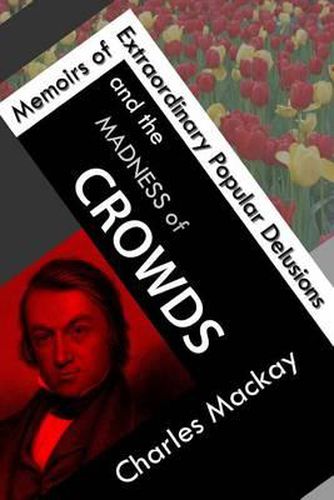Readings Newsletter
Become a Readings Member to make your shopping experience even easier.
Sign in or sign up for free!
You’re not far away from qualifying for FREE standard shipping within Australia
You’ve qualified for FREE standard shipping within Australia
The cart is loading…






This book has been professionally retyped and reformatted to fit modern day standards by officials of the Portuguese Institute of Higher Studies in Geopolitics and Auxiliary Sciences. *** Extraordinary Popular Delusions and the Madness of Crowds is a history of popular folly by Scottish journalist Charles Mackay, first published in 1841. The book chronicles its subjects in three parts: National Delusions , Peculiar Follies , and Philosophical Delusions . Despite its journalistic and rather sensational style, the book has gathered a body of academic support as a work of considerable importance in the history of social psychology and psychopathology.The subjects of Mackay’s debunking include economic bubbles, alchemy, crusades, witch-hunts, prophecies, fortune-telling, magnetisers (influence of imagination in curing disease), shape of hair and beard (influence of politics and religion on), murder through poisoning, haunted houses, popular follies of great cities, popular admiration of great thieves, duels, and relics. Present day writers on economics, such as Andrew Tobias and Michael Lewis, laud the three chapters on economic bubbles. Scientist and astronomer Carl Sagan mentioned the book in his own discussion about pseudoscience, popular delusions, and hoaxes.
$9.00 standard shipping within Australia
FREE standard shipping within Australia for orders over $100.00
Express & International shipping calculated at checkout
This book has been professionally retyped and reformatted to fit modern day standards by officials of the Portuguese Institute of Higher Studies in Geopolitics and Auxiliary Sciences. *** Extraordinary Popular Delusions and the Madness of Crowds is a history of popular folly by Scottish journalist Charles Mackay, first published in 1841. The book chronicles its subjects in three parts: National Delusions , Peculiar Follies , and Philosophical Delusions . Despite its journalistic and rather sensational style, the book has gathered a body of academic support as a work of considerable importance in the history of social psychology and psychopathology.The subjects of Mackay’s debunking include economic bubbles, alchemy, crusades, witch-hunts, prophecies, fortune-telling, magnetisers (influence of imagination in curing disease), shape of hair and beard (influence of politics and religion on), murder through poisoning, haunted houses, popular follies of great cities, popular admiration of great thieves, duels, and relics. Present day writers on economics, such as Andrew Tobias and Michael Lewis, laud the three chapters on economic bubbles. Scientist and astronomer Carl Sagan mentioned the book in his own discussion about pseudoscience, popular delusions, and hoaxes.